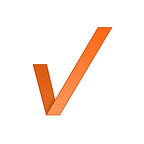The Ultimate Guide to GraphQL For Frontend Developers
Frontend development has evolved significantly in recent years, with new technologies and tools constantly emerging to streamline the development process. One such technology that has gained widespread popularity among frontend developers is GraphQL. In this comprehensive guide, we will dive deep into GraphQL and provide frontend developers with the knowledge and expertise they need to harness its power effectively.
What Is GraphQL?
GraphQL is a query language for your API, and it’s also a server-side runtime for executing those queries by specifying the structure of the response. It was developed by Facebook in 2012 and released as an open-source project in 2015. GraphQL allows frontend developers to request only the data they need, making it a more efficient alternative to traditional REST APIs.
The Benefits of GraphQL
GraphQL API offers several advantages for frontend developers:
1. Efficient Data Retrieval
With GraphQL, developers can request exactly the data they need, reducing over-fetching and under-fetching of data.
2. Single Endpoint
GraphQL provides a single endpoint for all data operations, simplifying the API structure.
3. Strongly Typed Schema
GraphQL schemas define the data structure and allow for type validation, enhancing data consistency.
4. Real-time Data
GraphQL supports real-time data with subscriptions, making it suitable for modern applications.
Getting Started with GraphQL
To get started with GraphQL, you’ll need to follow these steps:
Setting Up a GraphQL Server
Begin by setting up a GraphQL server using a framework like Apollo Server, Express, or Django.
Defining Your Schema
Define your GraphQL schema, specifying the types, queries, and mutations your application will support.
Writing Queries
Write GraphQL queries to request data from your server, specifying the fields you need.
Mutations
Implement mutations to modify data on the server, such as creating, updating, or deleting records.
GraphQL in Real-world Projects
Frontend developers often use GraphQL in various real-world scenarios:
E-commerce
GraphQL simplifies fetching product details and managing shopping carts in e-commerce applications.
Social Media
Social media platforms leverage GraphQL to provide real-time updates and personalized content to users.
Content Management Systems
GraphQL is ideal for content management systems, allowing developers to retrieve and update content efficiently.
Advanced GraphQL Concepts
Once you’ve mastered the basics, consider exploring these advanced GraphQL concepts:
Authentication and Authorization
Learn how to implement authentication and authorization mechanisms to secure your GraphQL APIs.
Optimizing Queries
Discover techniques for optimizing GraphQL queries to improve performance.
Error Handling
Understand how to handle errors gracefully in GraphQL and provide meaningful error messages to clients.
FAQs
Q: Can I use GraphQL with any frontend framework? A: Yes, GraphQL is framework-agnostic and can be used with React, Vue.js, Angular, and more.
Q: Is GraphQL suitable for mobile app development? A: Absolutely! GraphQL’s efficiency makes it an excellent choice for mobile app backends.
Q: Are there any limitations to GraphQL? A: While GraphQL offers numerous benefits, it may not be the best choice for every project. Consider factors like the learning curve and project complexity.
Q: How does GraphQL compare to REST APIs? A: GraphQL offers more flexibility and efficiency compared to traditional REST APIs, making it a preferred choice for many developers.
Q: Can I migrate an existing REST API to GraphQL? A: Yes, you can gradually migrate from REST to GraphQL by implementing GraphQL alongside your existing API.
Q: Are there any tools or libraries to help with GraphQL development? A: Yes, there are various tools and libraries like Apollo Client, Prisma, and Hasura that can streamline GraphQL development.
Conclusion
In this ultimate guide to GraphQL for frontend developers, we’ve explored the fundamentals, benefits, and advanced concepts of GraphQL. Whether you’re building web applications, mobile apps, or content management systems, GraphQL can empower you to create more efficient and flexible solutions. Embrace the power of GraphQL in your frontend development journey and unlock new possibilities.
